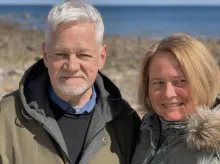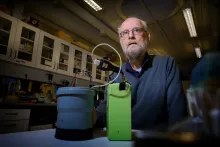
All organisms are part of ecosystems. Evolution permeates also all aspects of biology, because all organisms are products of evolution and, are continuously changing. Evolution occurs in ecological theaters on geological times but also sometimes amazingly fast.
The research topics of biologists in this field are topics like:
- Which factors shape the microbial communities in geothermal areas? (SB)
- How do owls use different habitats? (GÞH)
- What influences the rate of evolution in spiders? (IA)
- Can parasites provide ecological insights into trophic structure and dynamics? (HSR)
- Which effects do colonizing ants have on Icelandic fauna? (AP)
- Which factors influence the species composition of terrestrial ecosystems? (ISJ)
- Which factors influence colonization of plants (like birch) and progression on glacial flats? (SP, ÞEÞ)
- How repeatable is the evolution of polymorphism in Arctic charr? (ZOJ, AP)
- What evolutionary processes shape parasite evolution? (HSR)








